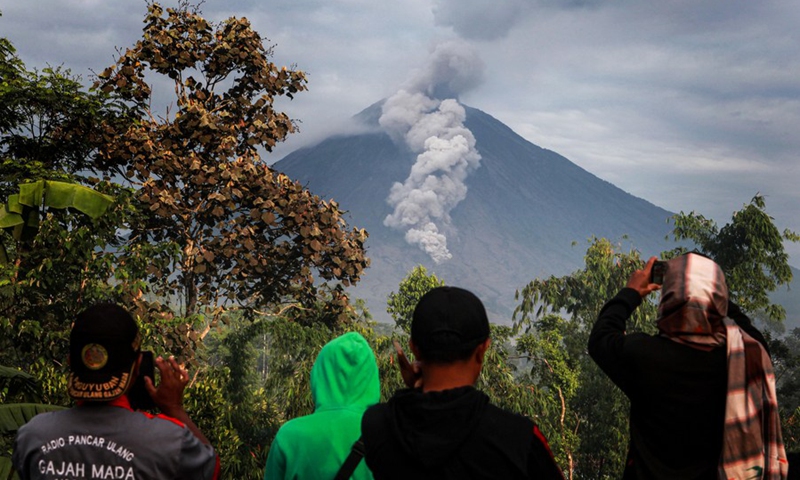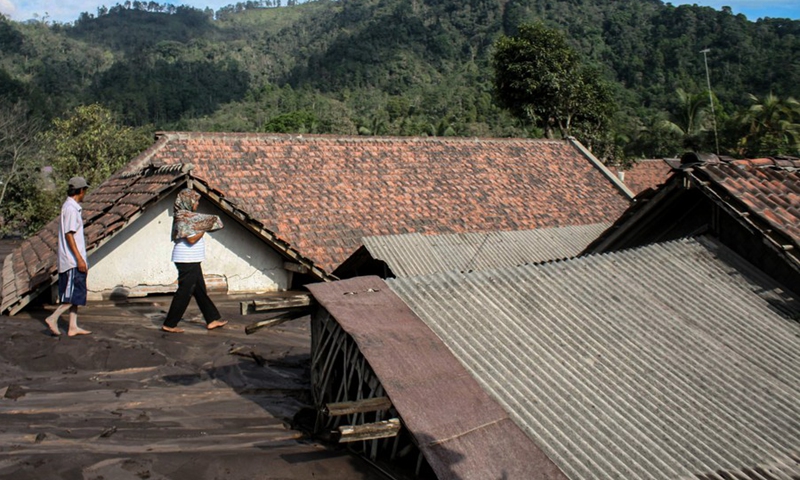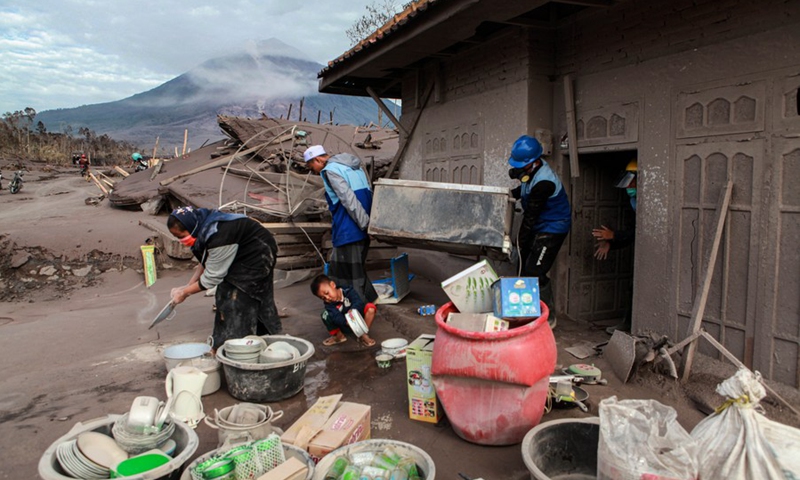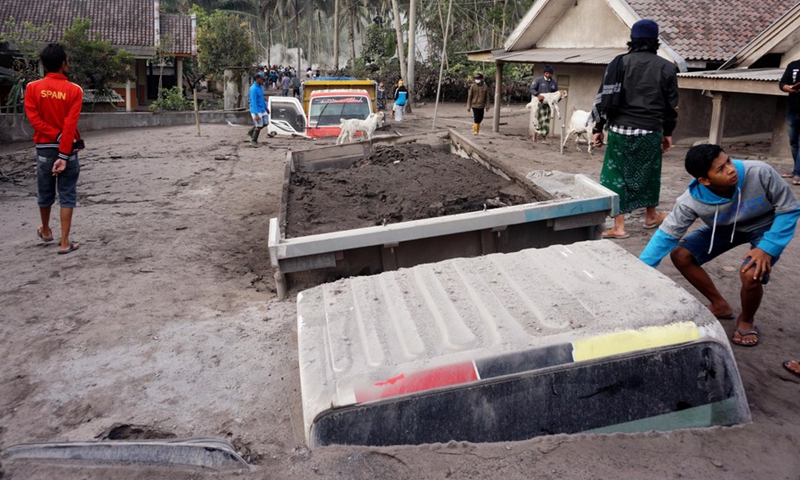
People watch the Mount Semeru from Sapiturang Village in Lumajang, East Java, Indonesia, Dec. 7, 2021.(Photo: Xinhua)

People walk by houses buried in volcanic ash after Mount Semeru eruption in Lumajang, East Java, Indonesia, Dec. 9, 2021. (Photo: Xinhua)

Volunteers help to move a cupboard from a house for cleaning after the Mount Semeru eruption in Sapiturang Village of Lumajang, East Java, Indonesia, Dec. 7, 2021.(Photo: Xinhua)

People walk near trucks buried in volcanic ashes after Mount Semeru eruption in Lumajang, East Java, Indonesia, Dec. 5, 2021.(Photo: Xinhua)
Indonesian people from various regions in the country are working hand in hand to help refugees from the eruption of Mt. Semeru, the highest volcano on Java island.
Among them are women of the largest Muslim organization in Indonesia, Nadhatul Ulama, who are carrying out trauma healing treatments for children at refugee camps.
They started their works last weekend at five camps on the southeastern slope of Semeru in Candipuro sub district, where refugees remember the gloomy afternoon of the dark sky when the mountain spewed gray hot clouds on Saturday, Dec. 4.
"They were telling their experiences while crying in fear and shaking their bodies, and said that they wouldn't want to go back to their homes," Camelia Habibah, a member of Nadhatul Ulama, told Xinhua on Monday, describing the traumas of the refugees.
At refugee camps, these volunteers have invited them to tell stories, draw and play together, so they can take a breath after the disaster claimed 48 lives, with dozens of others still missing, according to data released by Indonesia's National Disaster Management Agency.
As the trauma healing is not an instant process, last weekend's meeting was only the beginning. After returning from the camps, they devised a plan to involve more volunteers and psychologists.
Meanwhile, hundreds of women belonging to the ethnic Minang people in Dharmasraya district, West Sumatra Province, last Wednesday cooked a ton of "rendang" and donated to the Semeru refugees.
Rendang is a side dish typical of the Minang people to complement rice, mostly made from beef with spices that are cooked for hours and last longer.
This is not the first time that the Minang people donated food for the refugees, a move they call a reward for people's kindness when West Sumatra encountered an earthquake that killed more than 1,000 people in 2009.
"We hope that with this rendang, the immunity of the refugees would be maintained because this dish is good for health," said Dharmasraya district's head Sutan Riska.
This form of donation shows mutual cooperation and concern for others, as well as a message to the refugees that they are not alone, Riska added.
